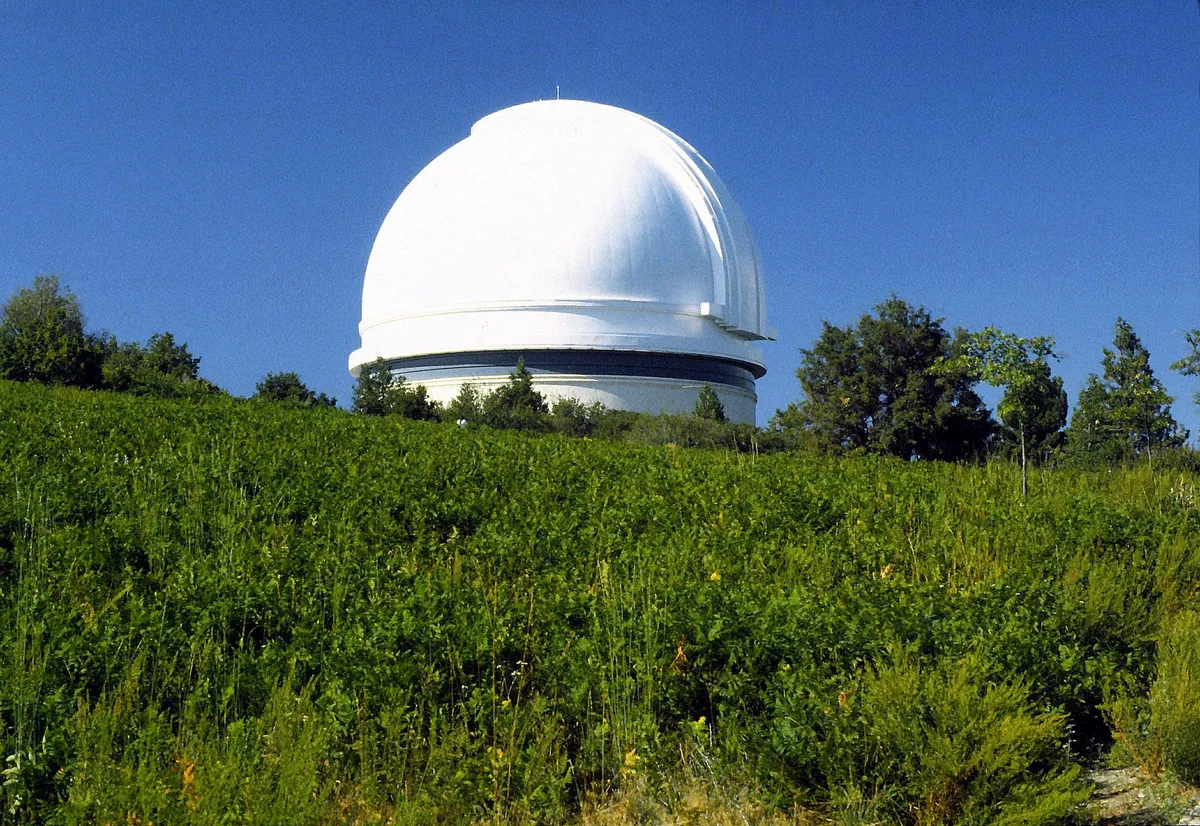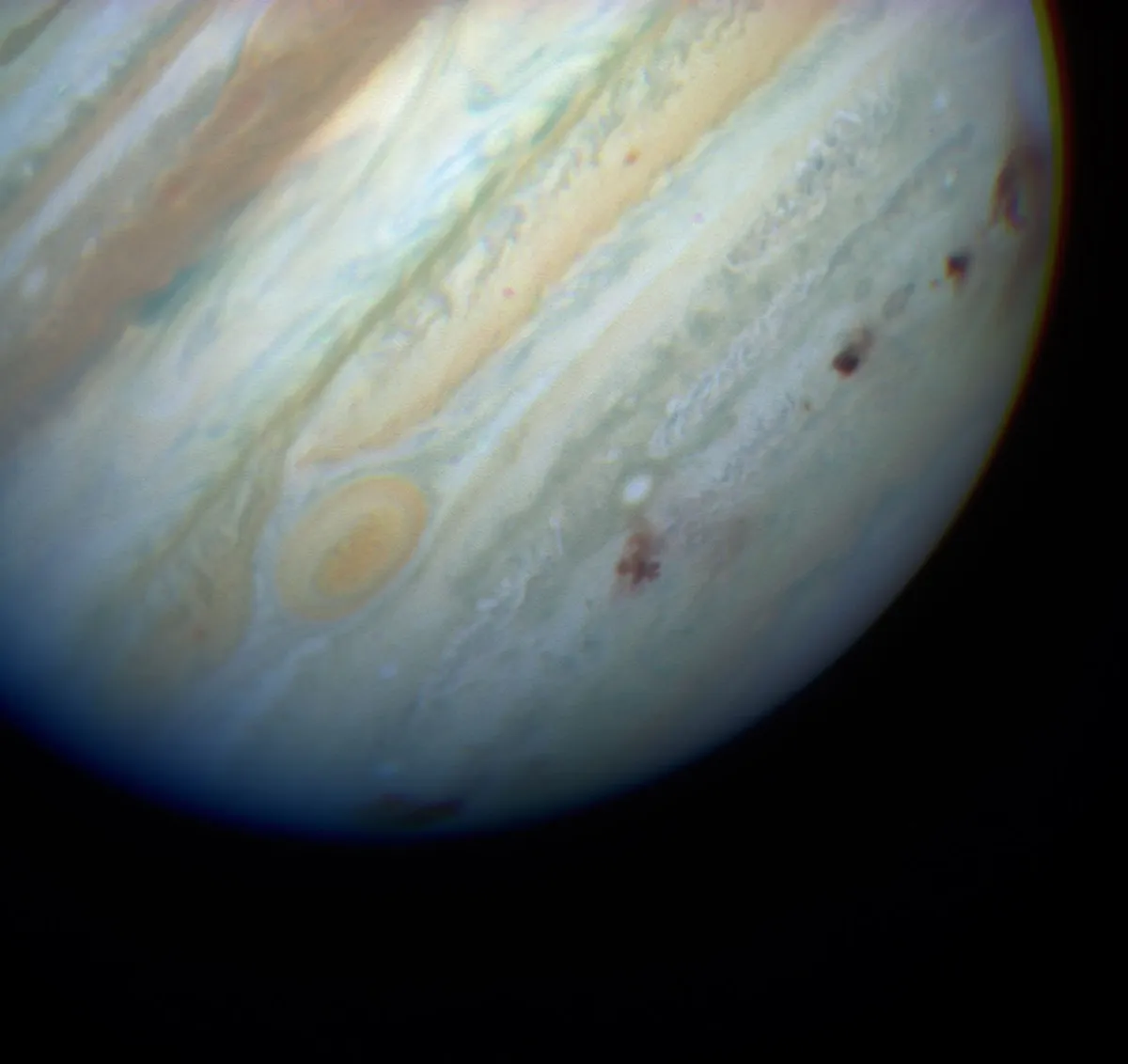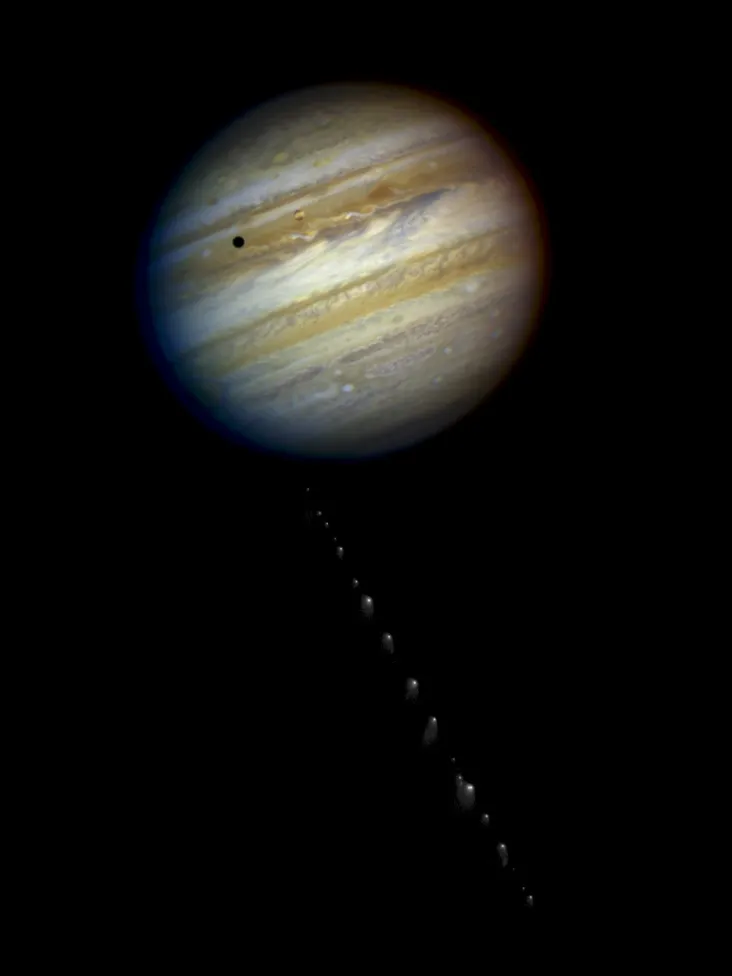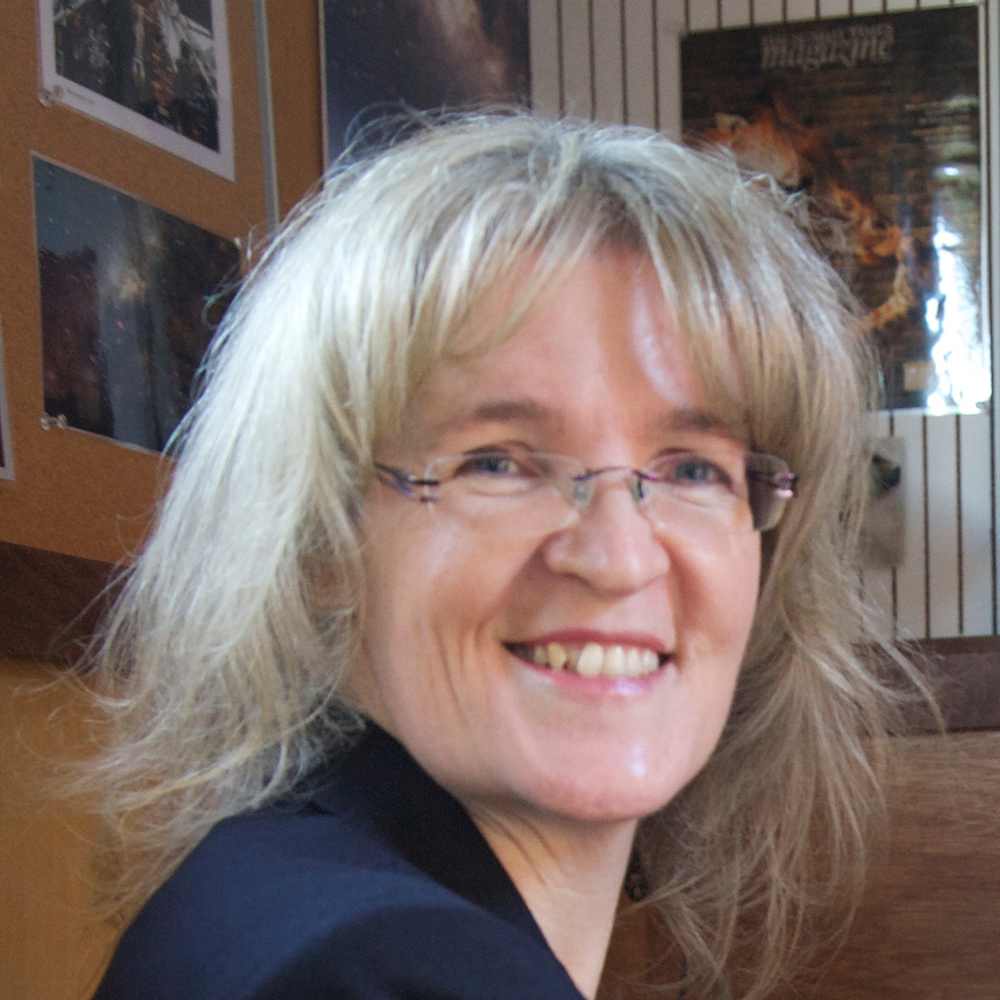On 23 March 1993, veteran US comet hunters Carolyn and Eugene Shoemaker and astronomer David Levy discovered another comet.
Using the 18-inch Schmidt telescope atop California’s Palomar Mountain, Shoemaker-Levy 9 (SL9) was their ninth collaborative discovery, and a game-changer.
Comets are the icy denizens of the Solar System, circling the Sun in elliptical orbits with periods lasting several to potentially millions of years.
The short-period ones, with orbits less than 200 years, originate in the Kuiper Belt or its associated scattered disc, beyond Neptune’s orbit.
Read more:
Long-period comets hail from the Oort Cloud, a ‘snowball’ of over a trillion frozen objects extending from the Kuiper Belt to halfway to the nearest star.
Unsettled by gravity, or nudged by a passing star, they zoom into the Solar System’s gravity well, typically rounding the Sun where radiation vaporises their cores and they are blasted by supersonic wind.
The onslaught creates a visible atmosphere, or coma, along with separate tails of ionised gas and sunlight-reflecting dust.
Hammered by the radiation pressure and solar wind plasma, these tails always point away from our host star.

Comets, like cosmic pinballs, run a gauntlet of planets and moons and other post-solar nebula debris.
Most survive, returning to icier realms, but SL9 was different.
It orbited Jupiter, making it the first known comet to do so, and its time was up.
Gravitationally captured by the gas giant since possibly the mid-sixties, on 7 July 1992 its two-year orbit took it some 40,000km miles above the Jovian atmosphere.
Battered by tidal forces, the comet was torn apart.
The ‘freight train’ of 21 icy fragments smashed into Jupiter’s cloud tops with the force of 300 million atomic bombs.
It was May 1993 when Brian Marsden, then Director of the Central Bureau for Astronomical Telegrams, announced these shattered fragments were on a collision course with Jupiter, target date mid-July 1994.
It would be the first observable pile-up between two solar system objects and made front-page news in The Times.
Here was scientists’ chance to study cometary structure and composition, witness the effects on Jupiter’s atmosphere and magnetosphere, observe chemical reactions and better understand how future impacts could affect Earth.
It was a learning curve no astronomer wanted to miss and an event everyone had to see.

Immediately the Voyager 2 spacecraft, which was exiting south out of the Solar System, observed SL9 with radio instrumentation and its UV spectrometer.
The Ulysses spacecraft, 800 million km from Jupiter and south of the Sun’s equator, measured radio and plasma waves.
NASA’s Deep Space Network at Goldstone, California, focused on the Jovian radiation belt seeking possible synchrotron emission, a by-product of disturbances from SL9’s dust.
The Galileo probe, which was en route to orbit around Jupiter, would capture unprecedented views.
Last but not least, the venerable orbiting Hubble Space Telescope and all available Earth-based observatories were cued for a spectacular show.
And what a show!

It was 16 July 1994 when the ‘freight train’ of 21 icy fragments smashed into Jupiter’s cloud tops with the force of 300 million atomic bombs.
It kick-started a seven-day fireworks extravaganza.
Impact plumes reached 1,900 to 3,000km high.
Slamming into Jupiter’s ‘far side’, most hit fairly close to the morning ‘terminator’.
Shortly within sight of Earth, any trained telescopes had a bird’s-eye view within minutes of the events.
The world watched, mesmerised, as Hubble captured collision after collision and the ‘bruises’ left behind, one the size of Earth.

UV observations caught the motion of ultra-fine impact particles in the upper atmosphere.
Once diffused to lower altitudes, they gave the first ever insight into high altitude wind patterns.
Astronomers spied hydrogen sulphide and ammonia compounds.
Every unfolding drama was a scientific revelation.
Yet just one month later, with scars fading, it was assumed there would be no permanent change.
Wrong.

Once Galileo reached Jupiter it revealed, in 1996 and 2000, ripples in the main ring – the smoking gun of SL9’s impact and affirmation of a post-impact entire ring tilt of 2km.
Similarly, two decades later, a flyby by NASA’s Pluto-bound New Horizons spacecraft confirmed ongoing ring disturbances.
Atmospheric water, observed in 2003 by ESA’s Herschel Space Observatory, likewise added to a list of long-lasting effects.
So as we mark SL9’s impact anniversary, we acknowledge our Solar System is constantly evolving.
Colliding comets and their dust streams fashion planets and their rings, fuelling biogenesis with life’s building blocks: a cosmic recycling theme.
And Jupiter is still being impacted today. Since 2010, astronomers observed multiple fireball impacts on Jupiter, showing how the gas giant's existence is anything but tranquil!



